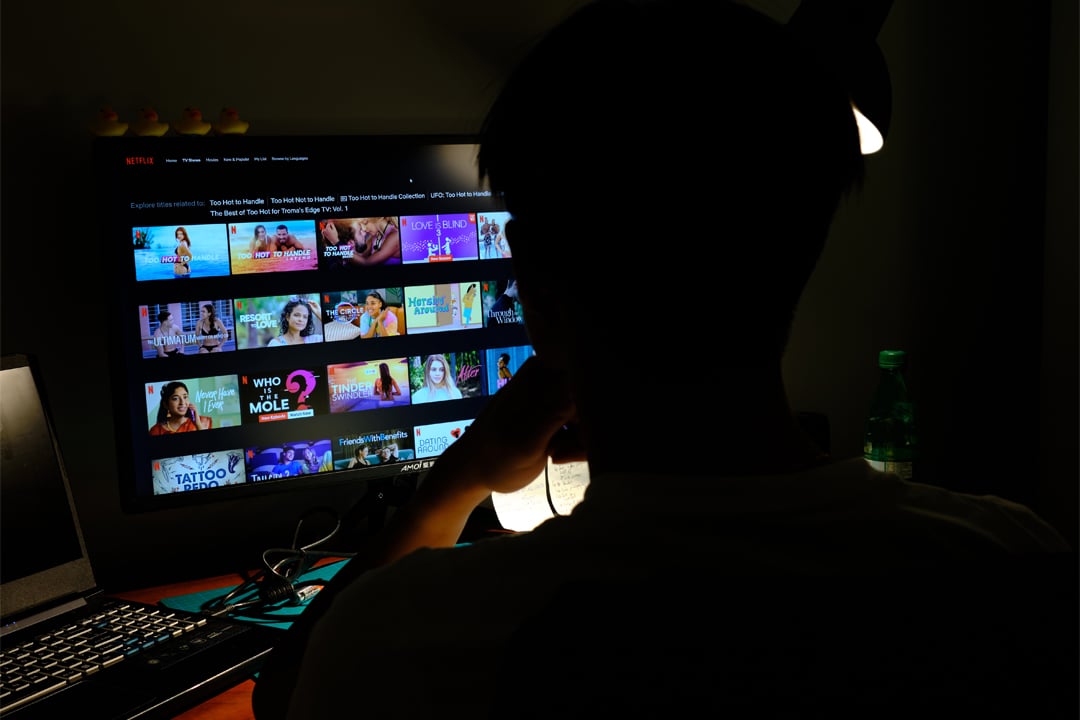I tried watching The Kissing Booth, but disliked it intensely; from the airtight rules of friendship to the ‘OMG girls’ that are a poor imitation of the Mean Girls’ ‘plastics,’ I found it cliché and unrealistic.
And yet, I raced to Netflix the day the sequel was released.
I would never have expected myself to be the kind of person who watches something for the sole purpose of making a mockery of it. Still, I know I’m not the only person who enjoys hatewatching — the act of consuming media with the intention, or expectation, of disliking it — made evident by the popularity of shows like Riverdale. The show accumulated a decent-sized viewership and a 6.6/10 rating on IMDB, given the amount of hate it received on social media. Despite very vocal backlash, the show continuously got renewed.
It seems that people cannot get enough of hatewatching.. And, in turn, the industry can’t stop producing content for us to hate — there are all sorts of bad movies and TV shows on a plethora of platforms. But why is it such a fail proof way to garner attention? Why do we love to hatewatch?
Consuming hate content
It’s possible that people are actually more engaged and stimulated by content that they’re meant to hate. Think about it: when you watch a good movie, you might be consuming substantial content, but you might not be thinking about it all that much. On the other hand, the pleasure of hate content is specifically derived from you actively making fun of it. You’ll watch He’s All That with some friends, make jokes about it throughout, post some hot takes on Twitter after the fact, and call it a day. The viewer obtains the pleasure of watching something mindless while also exercising their critical thinking skills at the lowest level.
People also often claim to like things ‘ironically’ to gloss over the fact that, despite ridiculous plot lines or poorly written characters, they indulge in that content. I believe it is possible to objectively understand that something is bad while simultaneously finding escapism in it — in other words, it’s so bad, it’s good.
However, bad media wouldn’t garner nearly as much attention if it wasn’t for the bandwagon effect, a psychological phenomenon based on our desire to feel included. When there starts to be an influx of hate for a particular piece of media, many people will want to hop on the ‘bandwagon,’ to make their judgment of whether it is as comical or absurd as the popular opinion makes it out to be. Since this creates a preexisting community with a shared opinion, people from that community go into the experience of consuming the media with negative biases.
Producing hate content
But what does this mean for the future of media? The concept that any kind of publicity is beneficial, whether positive or negative, has been around for a while. Whether you find the quality of certain content atrocious or exceptional, clicking on a video or streaming a movie is cash going into the creator’s pocket. For that reason, many intentionally create bad content for a quick buck.
For reference, a creator will earn money when a cringey POV video goes viral on TikTok, regardless of whether the people watching think the video is good or bad. Many viewers will rush to stitch it and post their reactions, and out of bewilderment, new people will find the original video to ridicule it themselves.
Although the whole process makes a laughing stock out of the original creator, what does virality mean for them? More engagement, clout, and money. This pattern has created a subgenre of content that is purposely bad which has spread like wildfire — creators are filming things so laughable that it’s hard to distinguish the genuinely bad content from intentionally bad content.
Traditionally, creators have had two options: they put in the effort to make good content and it performs well, or they put in the effort and it flops. But hate content has created a third option. Now that creators know how people react to hilariously bad content, it feels dependable to create something terrible and make a good earning from it, so long as they’re willing to sacrifice their credibility.
Moreover, this type of content lacks vulnerability. Since it’s satirical, it shields creators from authentic criticism since their content was meant to be bad.
Another cause for bad content is the sheer volume of content produced by platforms like Netflix. A broken clock is right twice a day, and Netflix uses that strategy to experiment with different kinds of content, prioritizing quantity over quality. The consequence? Their subscribers begin to dwindle, and every movie or TV show on Rotten Tomatoes with a rotten score is a Netflix Original.
But brands habitually look to the wants of consumers when creating products, and this is no different. I don’t believe that hate content is forcing a colossal shift in the media landscape that we need to take immediate action against. Most media creators want their work to be taken seriously, and making this specific content does not guarantee anything more than temporary attention and infamy.
Making movies and TV shows is an art form. If your sole purpose in creating art is for ulterior motives related to fame and money, that’s not art — and consumers will notice.
Admittedly, it’s become so easy to access bad media that it can become overwhelming to find what’s good. But there have been and will always be artists and executives making bad content because our love to hate as a human species is something innate and psychological. I, for one, will enjoy it sparingly.


